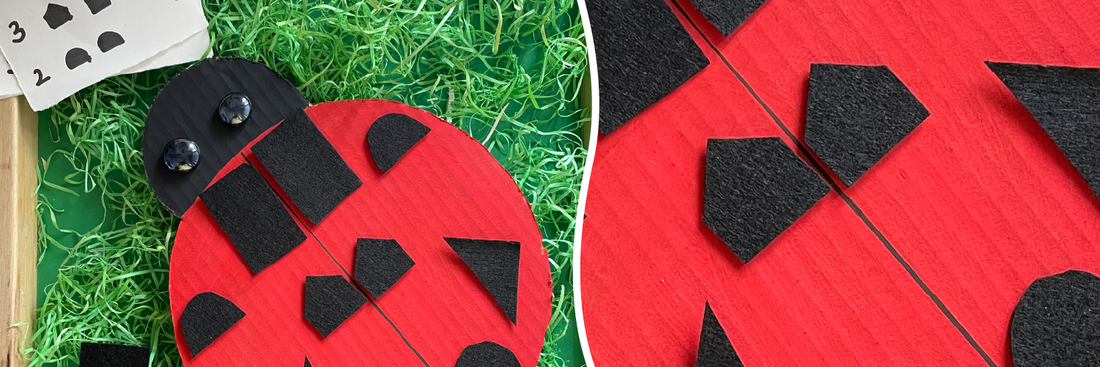Two legs, two hands, two eyes and ears — from our human body to nature around us, the matching halves of symmetry plays a huge role in helping us understand this world.
We know that as we grow older, symmetry is a big part of math, architecture, and art. But how do we explain the concept to little kids?
If you are curious, read on to see how you can get your child intrerested in symmetry with a simple at-home Co-Create with shumee game!
DIY Ladybug Puzzle
This week's Co-Create activity is brought to you by Shweta, a DIY blogger and mom to 2.8-year-old Aanshi. You can see Shweta’s previous Co-Create activities here.
Today, we will be making a Ladybug Shape Puzzle with which you can play 2 different games! Apart from learning symmetry, playing this offers your child several other benefits, such as:
1. Hones shape recognition skills: Identifying the right shapes on the chart and sticking them on the bug will hone your child’s ability to name and differentiate between shapes.
2. Teaches counting: Counting the number of pieces and sticking them will help your child get comfortable with numbers and counting.
Looking for a fun toy to teach your child shapes and counting? Don't miss shumee's beloved Shape and Number House — 1 house, 6 exciting games! |
3. Develops fine motor skills: Picking up and sticking the felt pieces will hone their finger strength, pincer grasp, and hand-eye coordination.
4. Strengthens spatial awareness: As your child replicates the patterns on one side onto the other, they will be able to build their spatial awareness and midline crossing skills. This will help with activities such as writing, buttoning, and eating!
5. Encourages independent thinking: Understanding symmetry gives your child more permission to follow the rules or make up their own on the page, which will translate into more confidence in different situations in life!
Making the Shape Puzzle

Age recommendation:
The counting activity is suitable for children between 2.5 to 4 years of age and the symmetry activity is ideal for kids between 3 to 5 years.
Material required:
1. A piece of cardboard
2. Red and black paint
3. Velcro dots
4. Black felt sheet
5. A pair of scissors
6. Pebbles or stickers for eyes
Have a nature lover at home? Here are some fun ways you can bring nature into your child's play! |
How to make the puzzle:
1. Cut out the cardboard in the shape of a ladybug as seen in the picture above.
2. Paint the bug in red and black. Draw a line through the center of its body.
3. Stick a few velcro stickers on one side of the bug, then replicate the same pattern on the other.
4. Cut out a few different shapes with the black felt paper. Have 3-4 pieces of each shape.
5. Make a sheet with numbers from 1 to 4. Pick a shape for each number and create a chart as shown in this video.
Playing with the Ladybug Shape Puzzle

There are two ways that your little one can enjoy this puzzle. The first is a counting activity and the second is a symmetry game.
For the counting activity, help your child count the number beside each shape and ask them to place those many cutouts of the felt paper on the ladybug. Once they are comfortable with this, you can move onto the next game.
To begin the symmetry game, stick different shapes on one side of the bug in any pattern you wish. Ask your child to replicate the same pattern on the other side. This is sure to get them thinking and building their spatial abilities!
We hope you’ve enjoyed this activity. If you would like to share your experience creating and playing with your own ladybug, tag us at #CoCreatewithshumee.
Shweta is a DIY blogger and mom who shares Montessori-inspired DIY activities for kids. You can follow her @toddlers_play_chronicles on Instagram.

